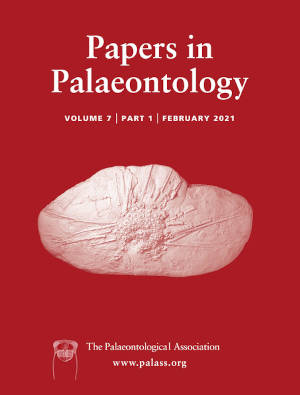Reg. Charity No. 1168330

The palaeopascichnids are a relatively abundant component of the Ediacara biota. The eponymous Palaeopascichnus delicatus consists of serially arranged, millimetre-scale allantoid chambers that have variously been interpreted as evidence of movement, feeding traces, and body fossils of various affinities. Palaeopascichnus has most recently been compared to the deep-marine Xenophyophora, an extant group of large, benthic protists characterized by their greater size and possession of stercomata within their cells. The morphometric variation in palaeopascichnids is assessed using material from the Avalon Peninsula of Newfoundland, Canada. The application of quantitative morphological analysis to the study of over 90 well-preserved specimens of Palaeopascichnus demonstrates considerable variation in chamber shape and size, and in behaviour along the chamber series. The combination of morphometric and multivariate statistical analysis allows the recognition of natural groups within the dataset, thereby demonstrating variability within and between morphospecies. Morphological comparisons of fossil palaeopascichnids with fossil and extant protistan taxa support the proposed protistan affinity of Palaeopascichnus, allowing further resolution regarding the diversity and disparity within this prominent element of the later Ediacara biotas of Gondwana and Baltica.